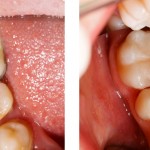
The use of resin modified glass-ionomer cement- or glass-ionomer as an element of ‘sandwich’ or ‘laminate’ restoration in posterior teeth has been advocated as it is considered that they may reduce stress and enhance the restorative bond.
The aim of this review was to compare the clinical outcomes of posterior teeth restored with adhesive laminate restorations compared to that of non-laminate adhesive restorations.
Methods
Searches were conducted in the Medline, Embase, Cochrane Library, Scopus ,Web of Sciences, www.controlled-trials.com, UMER collection www.dissertation.com and trove.nla.gov.au databases without language restrictions. Studies comparing resin modified glass-ionomer cement- or glass-ionomer cement-resin composite (RMGIC/GIC-RC) laminate restorations and flowable resin composite (FRC)-lined RC restorations to that of non-laminate RC restorations were considered.
The main outcome variable was clinical survival. Study quality was assessed using the GRADE system. For meta- analysis the raw data extracted from the included clinical studies were assessed and converted into dichotomous outcomes: failure (clinically unacceptable) and non-failure (clinically acceptable) or survival of restoration.
Results
- 13 RCTs (9 split mouth, 4 parallel) were included.
- According the GRADE system, 4 were considered to be high quality, 4 moderate, 2 low and 4 very low quality.
- 5 evaluated FRC-lined restorations, 8 studies evaluated RMGIC/GIC-RC laminate restorations.
- Three of eight RMGIC/GIC-RC laminate restorations assessed only post-operative sensitivity.
- A meta-analysis could only be conducted for FRC-lined restorations as the intervention. This included 3 studies finding no significant difference in clinical failures between FRC-lined RC restorations and RC restorations with no lining.
Conclusions
The authors concluded: –
Based on current clinical evidence, a FRC lining is no more advantageous than RC restorations with no FRC lining. More long-term RCTs are required, particularly for evaluating RMGIC/GIC-RC laminate restorations.
Comments
Despite an extensive search only a small number of limited trials were available to address this question. The authors highlight a number of methodological problems with the included studies, e.g. failure to report loss to follow up, not providing relevant information of whether restoration were for primary or secondary caries, not specifying the type of cavity margin, failure to specify if examiners had been calibrated. More longer term high quality RCTs are needed.
Links
Nguyen K, Sathorn C, Wong R, Burrow M. Clinical performance of laminate and non-laminate resin composite restorations: a systematic review. Aust Dent J. 2014 Nov 17. doi: 10.1111/adj.12252. [Epub ahead of print] PubMed PMID: 25404178.
Dental Elf – 15th Jun 2015 – Posterior resin restorations: high survival at 4 year

Little difference between laminate and non-laminate resin composite restorations http://t.co/JUqmBNehQX
Evidence limited for laminate restorations in posterior teeth http://t.co/JUqmBNehQX
Limited evidence on performance of laminate and non-laminate composites http://t.co/JUqmBNehQX
Laminate and non-laminate resin composites http://t.co/JUqmBNehQX
Don’t miss – Laminate restorations in posterior teeth: evidence limited http://t.co/JUqmBNehQX